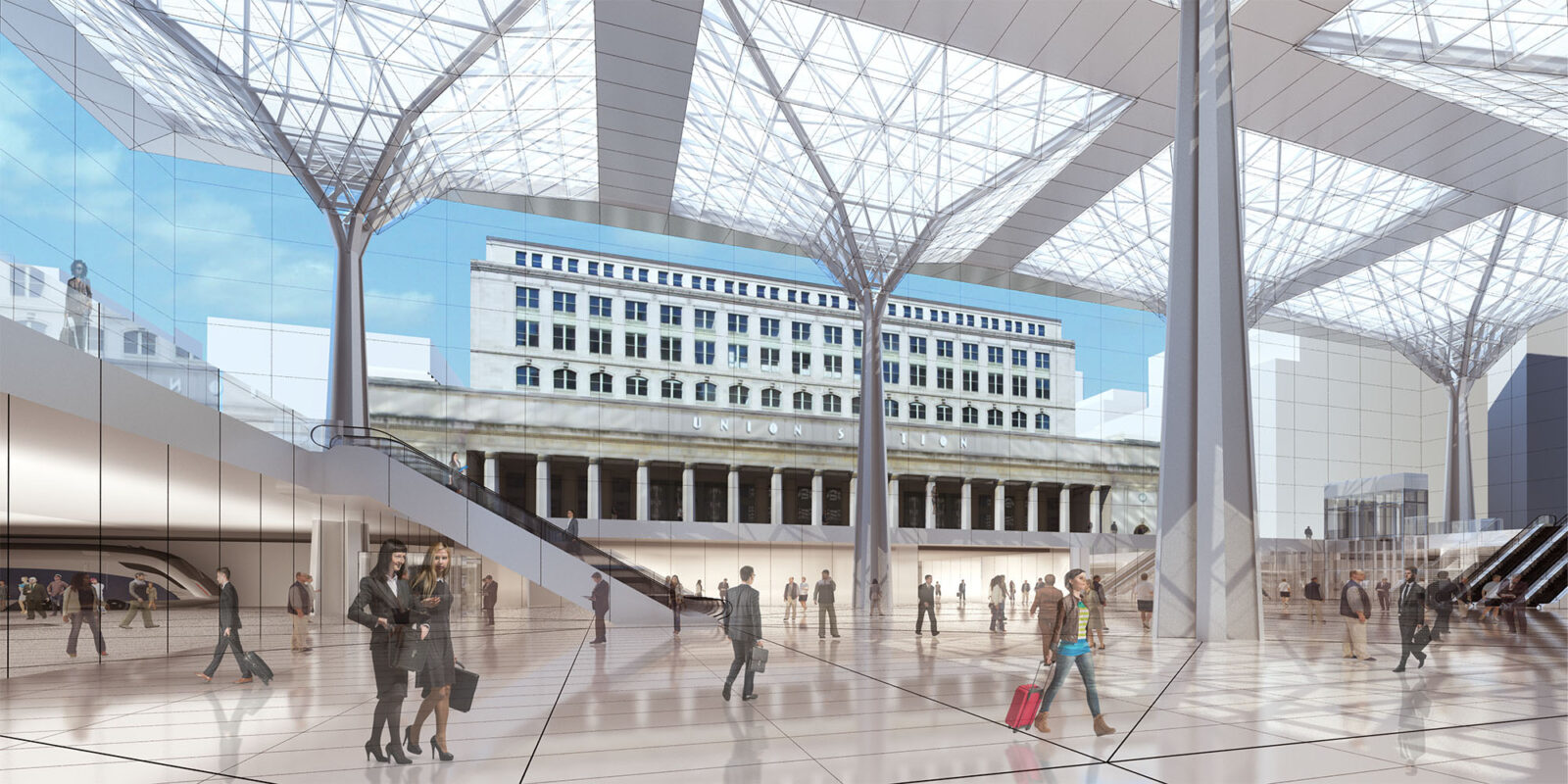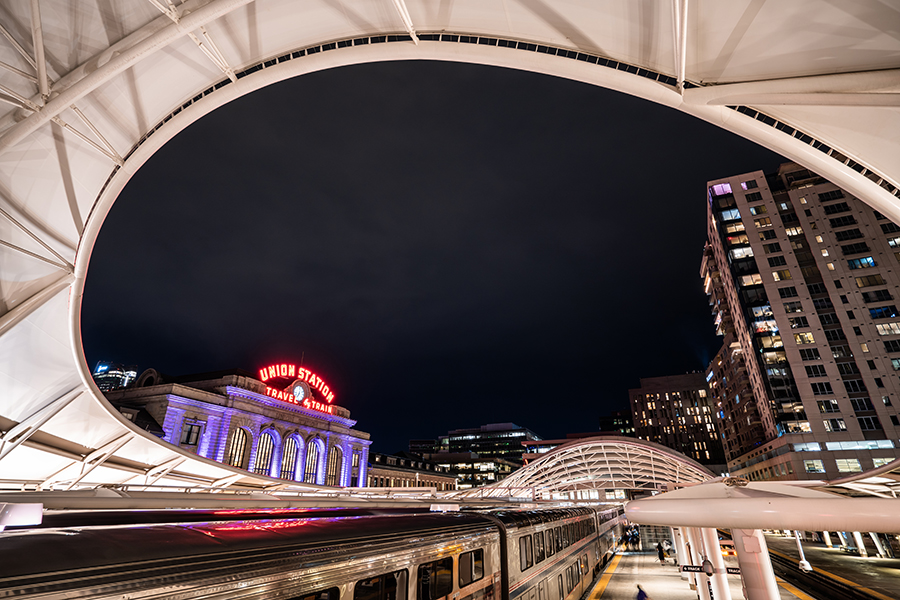Plans are well underway for a new regional rail route connecting communities in Colorado’s Front Range, one of the fastest-growing regions in the country. The Front Range runs nearly 200 miles along the eastern foothills of the Rocky Mountains—south to north from...
What’s the “tipping point” for high-speed rail in the U.S.? When will planners and lawmakers begin to see the HSR projects underway in the U.S. as building blocks for a national network of high-speed trains?
We have just taken a step closer.
Last week, Illinois Gov. J.B. Pritzker signed a bill that authorizes the creation of an Illinois High-Speed Railway Commission. Its task is to create a statewide plan for a high-speed line that connects with Chicago and St. Louis, with existing Amtrak and Metra services integrated into the system. The commission will also conduct a ridership study and issue recommendations.
What does an Illinois commission have to do with creating a national HSR network?
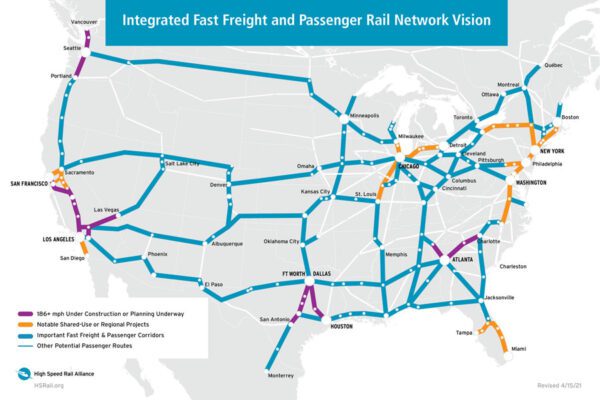
National Vision Map
Look at the map of HSR projects now underway in the U.S. You’ll notice they’re located on the perimeter of the country—i.e., in the Pacific Northwest, California, Texas, and Atlanta/Charlotte. Additionally, Florida and the Northeast Corridor (NEC) will soon have trains running at 125 mph and 160 mph, respectively. Major bridge and tunnel replacements on the NEC assume even higher speeds.
The heart of the country—the Midwest—is glaringly absent from that list. But the Midwest is (and always has been) the key to connecting the continent. Chicago’s role as a key transportation hub—for ships, then trains, then airplanes—stitched the country together and made Chicago a national and even global economic powerhouse.
In the most simple terms: Success in the Midwest depends on fixing Chicago Union Station and several critical paths to it.
A powerful force for bringing the U.S. together
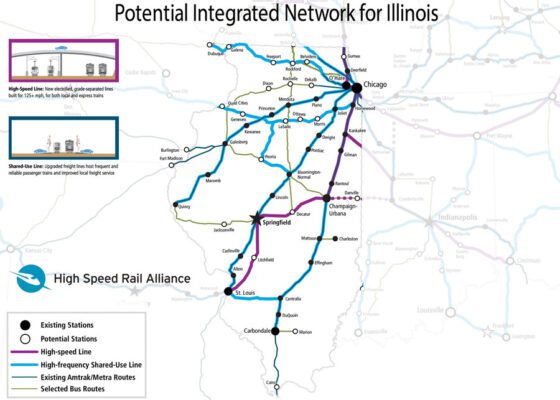
Illinois Network Map
With the creation of the HSR Commission, Illinois is on the verge of recovering and building on its tradition of being a powerful force for bringing the U.S. together—this time with a low-emissions, twenty-first century transportation system.
That’s because the commission will create a big-picture plan for connecting Illinois with fast, frequent trains. And a big-picture plan is the cornerstone of any successful HSR system. It allows states to maximize the value of their transportation systems by coordinating commuter rail, buses, conventional trains, and HSR—and then making smart, strategic decisions about when and where to add new segments and services.
In other words, HSR in Illinois will be about a lot more than just building a high-speed line from Chicago to St. Louis. It will be about creating a Midwestern model of an integrated transportation system—with HSR driving innovation and coordination across the whole system.
In turn, a strong and successful foundation in Illinois will create momentum for HSR’s expansion in two directions—from the inside out, and from the outside in.
First, it will incentivize the expansion of HSR across the entire Midwest.
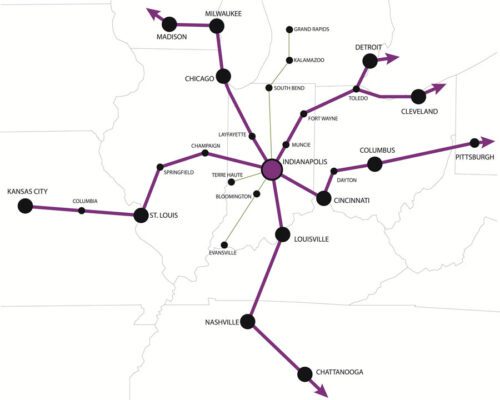 As HSRA has observed, Indiana is ripe for HSR. Roughly 55 million people live within 300 miles of Indianapolis. For comparison, about 37 million people live within the same distance of Atlanta. The number is 36 million for Charlotte; 16 million for Phoenix; and 12 million for Seattle.
As HSRA has observed, Indiana is ripe for HSR. Roughly 55 million people live within 300 miles of Indianapolis. For comparison, about 37 million people live within the same distance of Atlanta. The number is 36 million for Charlotte; 16 million for Phoenix; and 12 million for Seattle.
For Philadelphia—right in the heart of the most densely populated “megalopolis” in America—it’s 67 million. Which means that, although people love to talk about the NEC as being uniquely “right” for HSR because of its population density, the Midwest has comparable population density. Like the NEC, it’s also home to some of the most innovative companies in the country, as well as dozens of premiere institutions, including an incredible network of world-class research universities.
In short: If HSR makes sense for the East Coast, it makes sense for the Midwest.
Second, a growing and flourishing network in the Midwest will change the calculus of expanding the HSR systems now being built on the nation’s perimeter.
When there are high-speed lines running from Chicago to Cleveland and Detroit, for example, New York and Buffalo/Toronto will have strong incentives to connect with them. The same is true in every direction. The incentives of a vibrant Midwestern network will pull the Atlanta/Charlotte line toward Louisville/Cincinnati/Indianapolis. And they’ll pull the Houston/Dallas line toward St. Louis. That trip—which is currently a brutal 10-hour car drive—could be an easy and pleasant five–hour train ride.
There’s an old line from a Hemingway novel about how bankruptcy happens: Gradually, then suddenly. The same is true of building something as vast and ambitious as a national HSR network.
We’re in the middle of the gradual stage, as new lines are being planned and built all around the edges of the country. With the creation of a High Speed Rail Commission in the heart of the nation, we may be approaching an exciting tipping point stage.
The individual pieces will be brought together and connected via the heart of the nation—the Midwest. And then, “suddenly,” we’ll have a national network of high-speed trains.
The Latest from HSRA
Our Latest Blog Posts
Check out the latest news, updates, and high speed rail insights from our blog!
